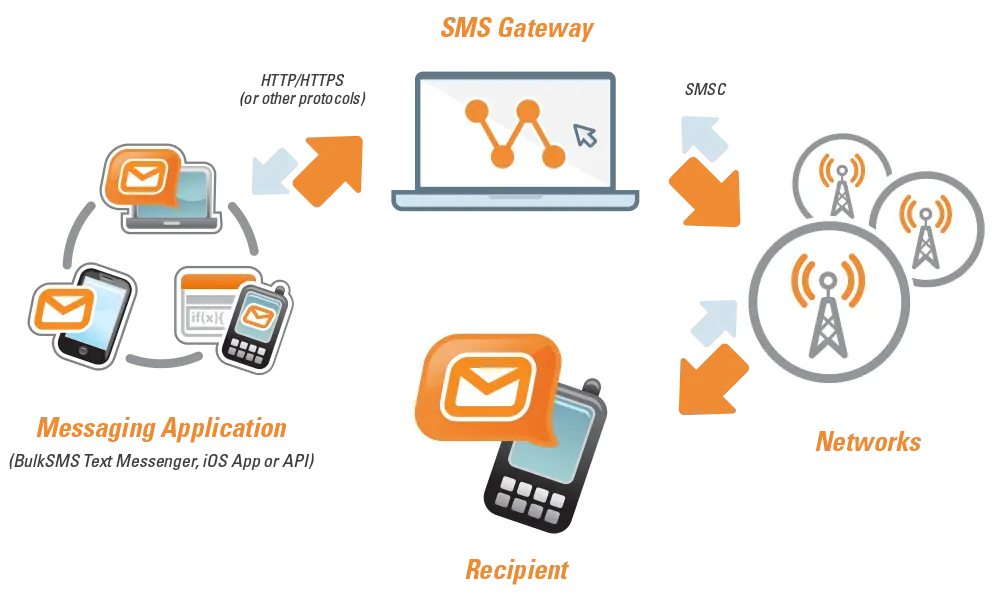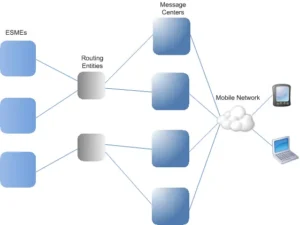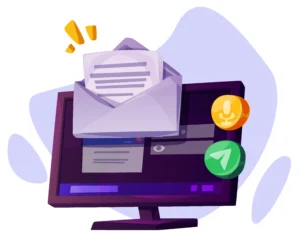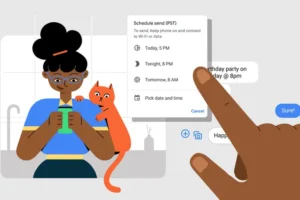Short Message Service (SMS) remains a ubiquitous tool for sending text messages, whether for promotional campaigns, transactional notifications, or customer support.
Three integral components in the SMS ecosystem are SMSC (Short Message Service Center), SMS Gateway, and SMS API. While they all play crucial roles in facilitating SMS transmission, each serves distinct functions. Let’s delve into the specifics of each service to clarify their differences and functionalities.
SMSC (Short Message Service Center)
The SMSC acts as the backbone of the SMS network, serving as a centralized hub for managing the storage, forwarding, and delivery of text messages. Key features of SMSC include:
Message Routing: SMSC routes messages between mobile devices and external networks, ensuring seamless communication across different carriers and protocols.
Message Storage: It temporarily stores messages until they can be successfully delivered to the intended recipient, handling scenarios such as offline devices or network congestion.
Message Delivery: SMSC is responsible for delivering messages to the recipient’s device or forwarding them to another SMSC if necessary, ensuring reliable message transmission.
Message Status Monitoring: It tracks the status of sent messages, providing delivery reports and acknowledgments to the sender, indicating whether messages were successfully delivered or encountered issues.
SMS Gateway
An SMS gateway acts as a bridge between telecommunication networks, facilitating the transmission of SMS messages to and from mobile devices. It serves as a centralized platform that enables businesses to send and receive text messages across various carriers and mobile networks. Here are key features and functionalities of an SMS gateway:
Connectivity: SMS gateways are equipped with connections to multiple mobile networks, ensuring broad coverage and reach for message delivery.
Protocol Conversion: They convert messages from one protocol to another, enabling seamless communication between different network types and devices.
Message Routing: SMS gateways determine the most efficient route for message delivery, considering factors such as network availability, cost, and delivery speed.
Message Queuing: They manage message queues, ensuring timely delivery and handling of large volumes of messages.
Delivery Reports: SMS gateways provide real-time delivery reports, allowing businesses to track the status of sent messages and monitor their performance.
SMS API
An SMS API (Application Programming Interface) is a set of protocols, tools, and functionalities that allow developers to integrate SMS capabilities into their applications, websites, or software platforms. It serves as a programming interface that enables automated sending and receiving of text messages. Here are key aspects of an SMS API:
Integration: SMS APIs provide developers with pre-built code libraries, SDKs (Software Development Kits), and documentation to seamlessly integrate SMS functionality into their applications or systems.
Customization: They offer flexibility for developers to customize message content, sender IDs, and delivery settings based on specific business requirements.
Automation: SMS APIs enable automated messaging workflows, allowing businesses to trigger messages based on events, user interactions, or predefined schedules.
Scalability: With SMS APIs, businesses can scale their messaging capabilities dynamically to accommodate varying message volumes and user interactions.
Response Handling: SMS APIs facilitate the handling of incoming messages, enabling businesses to process replies, opt-ins, and other user interactions programmatically.
Key Differences
While SMSC, SMS gateway, and SMS API all play vital roles in SMS communication, they serve distinct functions:
Infrastructure vs. Interface: SMSC forms the core infrastructure for SMS transmission, while SMS gateway acts as an intermediary between networks and applications, and SMS API provides a programming interface for developers to integrate SMS functionality into their applications.
Message Handling vs. Message Delivery: SMSC primarily handles message storage, routing, and delivery within the SMS network, whereas SMS gateway focuses on connecting networks and converting messages between different formats. SMS API enables developers to interact with SMS functionality programmatically, automating message sending and receiving.
Conclusion
In conclusion, understanding the differences between SMSC, SMS gateway, and SMS API is crucial for businesses seeking to optimize their SMS communication strategies. By leveraging the unique capabilities of each component, businesses can enhance their messaging capabilities, engage with their audience effectively, and streamline communication processes in today’s mobile-centric world.





